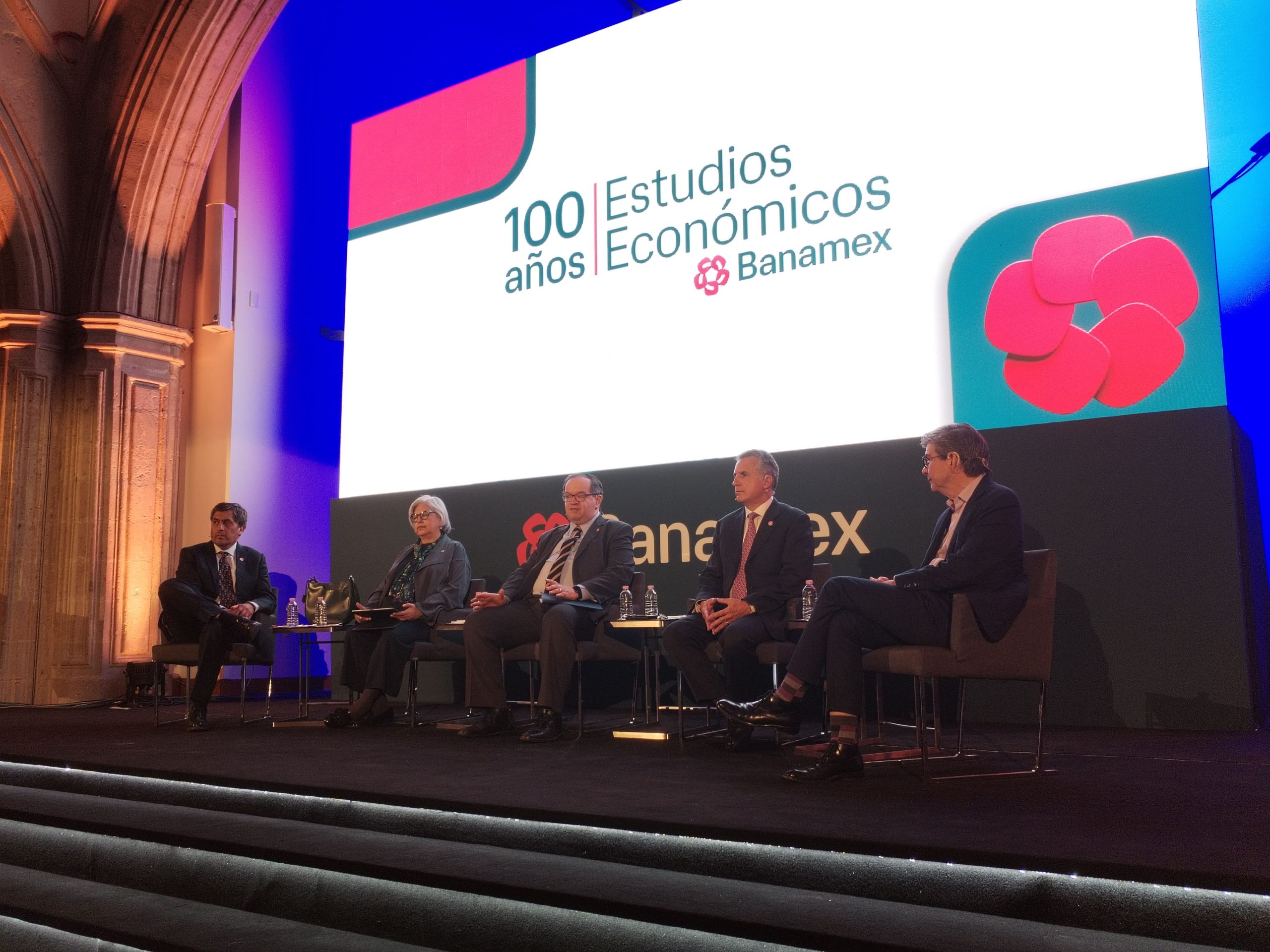The Economic Studies Department of Banamex celebrates 100 years of existence. It was at the end of March 1925 when the institution —founded 41 years earlier, in 1884— created its economic studies area and published its first journal, then called Estudio de la Situación Bancaria e Industrial. Four years later, it changed to its current name: Examen de la Situación Económica de México (ESEM).
“Resilience, perseverance, the desire and need to have accurate and reliable information, along with funding to consolidate it, are the factors that made 100 years of economic analysis and dissemination in the country possible through the ESEM and the Economic Studies Department of Banamex,” agreed the members of the panel held in celebration of the 100-year anniversary.
Participants included: Manuel Romo, CEO of Grupo Financiero Banamex; Alberto Gómez Alcalá, Director of Institutional Affairs, Economic Studies, and Communication at Banamex; Leonardo Lomelí, Rector of the Universidad Autónoma de México; Luis Anaya, specialist in Banking History; Julio Santaella, advisor to the Board of Governors of Banco de México; and Graciela Márquez, President of INEGI.
The century-old specialized area of Banamex and its journal are pioneers and unique in the country and, most likely, in Latin America.
In Mexico, there are only two journals and analysis areas that have existed for several decades (although not as many as Banamex’s). These are the Mercado de Valores journal, published by the development bank Nacional Financiera (Nafinsa), and the Comercio Exterior journal from the Banco Nacional de Comercio Exterior (Bancomext).
Until 1925, Banamex was the most important bank in a banking and financial system engulfed in the chaos following the end of the Mexican Revolution, which had left a divided society and a Mexican financial system without clear definitions on crucial issues such as the issuance of money or currency circulation.
To address this, in September of that year, the Banco de México (Banxico) began operations, with the intention of bringing order to the country’s monetary chaos, having the exclusive authority to issue money, among other things. The economic analysis area, founded just a few months after the launch of Banxico, was key to understanding the early process of establishing a central bank in a country like Mexico.
“Looking back from a century’s distance, we have an easier task today; our specialized area has been consolidated, and we have demonstrated its importance for our bank, for society, and for the country in general. Looking ahead, we have a very important task: to maintain the goal with which it was founded 100 years ago —to analyze Mexico, its economic problems and challenges, to propose solutions, and to uphold our objectivity, among other things,” concluded Sergio Kurczyn, Director of Economic Studies at Banamex.




